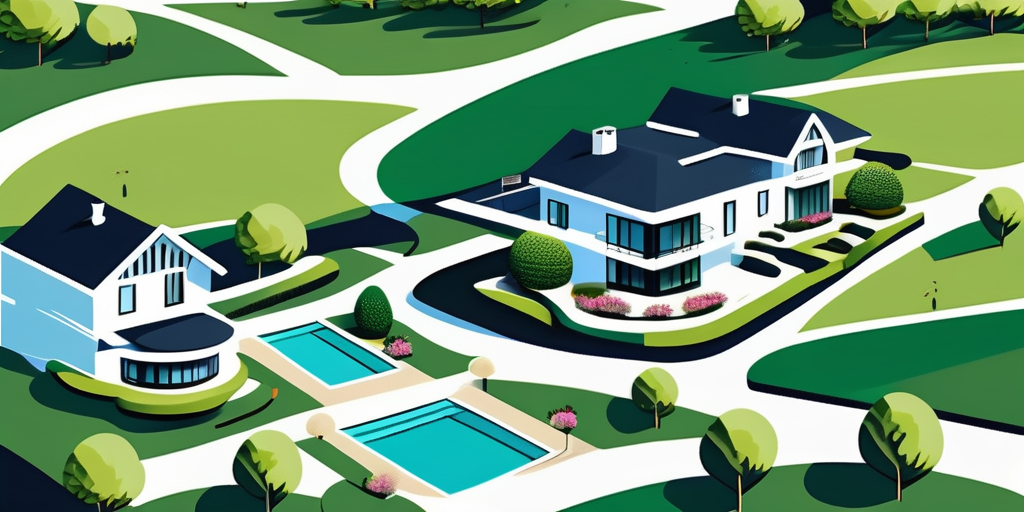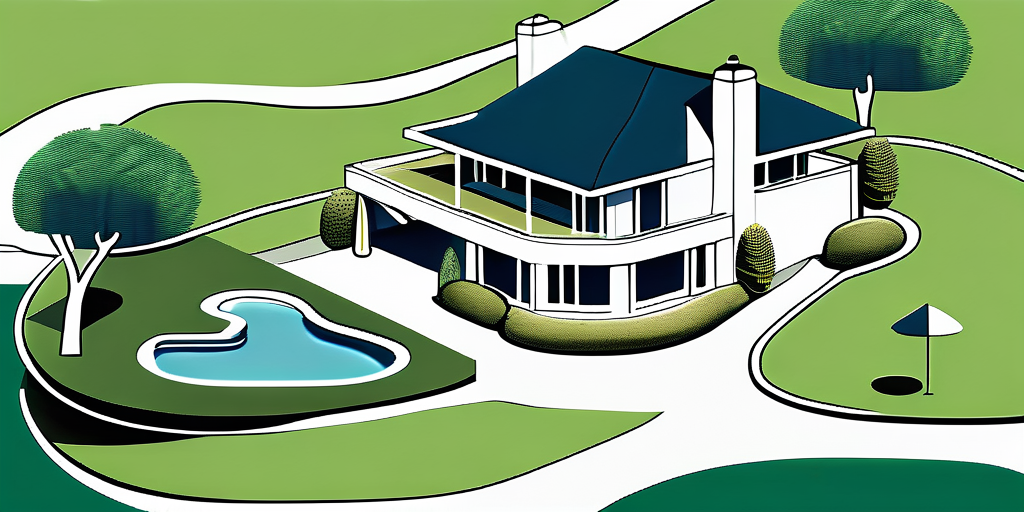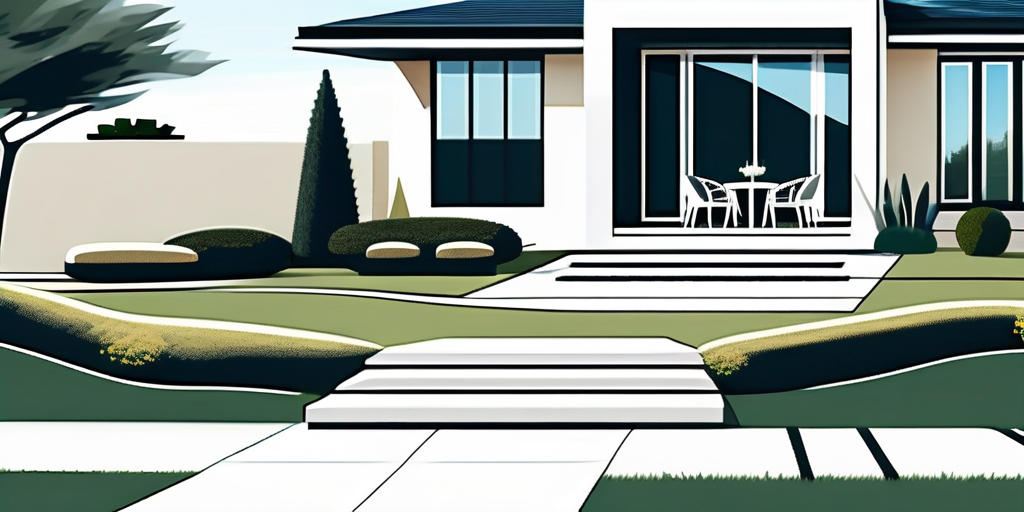
If you've ever considered living on a golf course, you're not alone. Golf course homes offer a unique lifestyle that combines the beauty of nature with the benefits of a vibrant community. Whether you're a golfer or simply enjoy the picturesque views, this guide will take you through everything you need to know about golf course home real estate.
Diving into the world of golf course homes can seem daunting, but once you understand the nuances, it becomes much more manageable. These properties come with their own sets of benefits, challenges, and lifestyle choices that make them distinct from traditional homes.
One of the biggest draws to golf course homes is the stunning landscapes. Imagine waking up to breathtaking views of greens and fairways. For many, this peaceful scenery can be a significant stress-reliever in today’s fast-paced world.
Moreover, golf course homes often provide access to luxurious amenities, including clubhouses, pools, and private events. Residents can enjoy not just a beautiful home, but an entire lifestyle of leisure and relaxation. The sense of community is also a significant factor; neighbors often share a common interest in golf and outdoor activities, fostering friendships and social gatherings that can enhance the living experience.
When it comes to golf course homes, certain features stand out for prospective buyers. Large patios and decks can be perfect for entertaining guests while soaking in the beautiful surroundings. Open floor plans are common, allowing for seamless movement between living spaces and the outdoors.
Additionally, many golf course homes come equipped with spacious garages, gourmet kitchens, and luxurious master suites. Given their unique locations, maintaining a good relationship with the homeowners' association (HOA) is usually crucial, as they often oversee the course's aesthetics and maintenance. Furthermore, many golf course communities offer exclusive events, such as golf tournaments and social gatherings, which can enhance the sense of belonging and provide opportunities to meet like-minded individuals who share a passion for the sport.
Another appealing aspect of golf course living is the potential for investment. Properties in these desirable locations can appreciate significantly over time, making them not just a home but a valuable asset. With the right market conditions, homeowners may find that their investment in a golf course property yields substantial returns, especially if they choose to rent it out during peak seasons. This dual benefit of enjoying a luxurious lifestyle while also securing a financial future is a compelling reason for many to consider golf course real estate.
Understanding the real estate market for golf course homes involves more than just looking at prices; it’s about knowing trending preferences and predicting movements.

Recently, there has been a noticeable increase in demand for golf course homes, especially among retirees and those seeking second residences. People are drawn to properties with easy access to outdoor activities and a sense of community.
Another trend is the rise of eco-friendly and sustainable homes. Buyers are becoming more conscious of their environmental impact and are seeking homes that incorporate green technologies and materials.
Moreover, the integration of smart home technology is becoming increasingly popular. Homebuyers are looking for properties equipped with smart thermostats, security systems, and energy-efficient appliances that not only enhance convenience but also contribute to lower utility costs. This shift towards technology-driven living spaces reflects a broader desire for modernity and efficiency, making golf course homes even more appealing to a tech-savvy demographic.
Several factors influence the market value of golf course properties. Location is paramount. Homes on prime spots, like near the clubhouse or with unobstructed views, often command higher prices.
Additionally, the course's reputation plays a role—well-maintained and prestigious courses tend to enhance property values significantly. Amenities also matter; properties within communities that offer extra perks such as pools, fitness centers, or security often see appreciation in value over time.
The overall economic climate also impacts these properties. Interest rates, employment rates, and the general health of the economy can sway buyers' willingness to invest in golf course homes. For instance, during times of economic prosperity, buyers may be more inclined to purchase luxury properties, whereas economic downturns can lead to a more cautious approach. Understanding these economic indicators can provide valuable insight into potential shifts in the market.
The future of golf course home real estate appears promising. As remote work continues to gain traction, many are looking to relocate from urban centers to quieter, picturesque environments.
Furthermore, the ongoing investment in community infrastructures, such as roads, schools, and health facilities, can lead to a steady increase in demand for golf course properties. Buyers are likely to see golf course homes as not just residences, but also sound investments.
In addition, the growing popularity of golf as a recreational activity among younger generations is likely to sustain interest in golf course communities. As more people take up the sport, the allure of living adjacent to a well-kept course will likely increase, further driving demand. This trend could lead to a revitalization of golf course communities, making them attractive not only for traditional buyers but also for a new wave of golf enthusiasts looking for a lifestyle that combines leisure and luxury.
If you're contemplating purchasing a home on a golf course, there are several important factors to keep in mind to make the best decision for your lifestyle and finances.

When selecting your desired golf course home, location is key. How far is it from your workplace, schools, and grocery stores? While the serene environment is alluring, you also want to ensure that daily conveniences are easily within reach.
Accessibility to the golf course itself is essential. Understand the community layout and how the home interacts with the course. Some homes might be too close to the fairways, which could pose risks, such as stray golf balls!
Additionally, consider the surrounding amenities that come with the location. Are there nearby parks, walking trails, or recreational facilities? A golf course home often offers a lifestyle that extends beyond just golfing; it can provide a vibrant community atmosphere with opportunities for outdoor activities, social gatherings, and a sense of belonging. Proximity to these amenities can greatly enhance your quality of life.
Many golf course communities require residents to be members of the golf club, which usually entails an additional fee. Find out what that membership gives you access to—some clubs offer expanded amenities, including dining options, social events, and access to special tournaments.
Consider your own golfing habits as well. If you play regularly, the benefits of a membership may outweigh the costs, but if you plan on playing only occasionally, you might want to weigh your options prudently.
It's also worth investigating the club's culture and community. Some golf clubs foster a more competitive environment, while others may emphasize social interactions and relaxed play. Understanding the club's atmosphere can help ensure that it aligns with your personal preferences and lifestyle. Additionally, inquire about any potential waiting lists for membership, as some exclusive clubs may have limited availability.
Being conscious of HOA regulations is crucial. Many golf course communities have strict guidelines regarding landscaping, exterior modifications, and general community behavior. Get to know these rules before committing to a purchase.
Understanding your responsibilities as a homeowner—such as maintenance fees or ascertaining how the HOA handles landscaping and course upkeep—can save you headaches later on.
Moreover, consider the financial health of the HOA. Reviewing past meeting minutes and financial statements can provide insight into how well the community is managed and whether there are any upcoming assessments or issues that could affect your investment. A well-managed HOA can enhance property values and ensure a pleasant living environment, while a poorly managed one can lead to disputes and declining conditions within the community.
Looking to sell your golf course home? It’s essential to have a solid strategy in place to attract potential buyers and make the most out of your investment.

When selling your home, emphasize aspects that set it apart. Perhaps it has a gorgeous view of a hole in one, or maybe it boasts a beautifully designed patio perfect for hosting gatherings.
Make sure to stage your home well. A well-maintained, neatly arranged living space can make a big difference in how potential buyers perceive its value. Consider hiring professional photographers to capture your home’s best angles, especially highlighting its proximity to the course.
Additionally, consider showcasing any custom features that enhance the lifestyle of living on a golf course. For instance, if your home includes a golf simulator room or a personal putting green, these elements can be incredibly appealing to golf enthusiasts. Buyers are often looking for a lifestyle upgrade, and demonstrating how your home can provide that experience can set your listing apart from others.
To sell effectively, you need to price your home competitively. Research homes that have recently sold in your neighborhood to gauge a fair price point.
Collaborating with a real estate agent who has experience in golf course home sales can provide valuable insights. They can help craft a listing that is informative and appealing while ensuring it aligns with current market trends.
Moreover, consider the seasonal trends in the real estate market. Golf course homes might see increased interest during the spring and summer months when golf enthusiasts are most active. Timing your listing to coincide with these peak seasons can lead to a quicker sale and potentially higher offers.
Utilize a multi-channel approach to marketing. From social media posts showcasing stunning images of your home and the adjoining golf course to listing it on real estate sites, broadening your reach is essential.
Participate in local events at the golf course or host an open house. The more exposure you can garner, the better your chances of finding the right buyer. Collaboration with local golf communities can also help promote your listing to interested buyers.
Consider creating a virtual tour of your home, allowing potential buyers to explore the space from the comfort of their own homes. This can be particularly appealing to out-of-town buyers who may be interested in relocating but cannot visit in person immediately. Additionally, testimonials from neighbors or previous owners can add a personal touch, showcasing the community and lifestyle that comes with living near a golf course.
In conclusion, golf course home real estate offers a unique investment opportunity and lifestyle choice. With proper understanding and strategic planning, both buyers and sellers can navigate this niche market successfully. Whether you choose to enjoy the laid-back lifestyle or the thrill of living on the fairway, golf course homes hold a rich allure for many. Happy house hunting or selling!